Driving in cold environments presents distinct challenges. From slippery ice-covered roads to biting low temperatures, your vehicle needs to be well-prepared to face these conditions.
Luckily, there are several used cars specifically designed or equipped to perform exceptionally well in cold weather.
In this article, we highlight the top five used cars that stand out in freezing conditions, guaranteeing your safety and comfort throughout winter.
Cars That Survive Harsh Winters
Here’s a look at cars that can truly survive harsh winters—we’re talking about snow, ice, sub-zero temperatures, and roads that look more like skating rinks. What you want in a winter beast is reliability, all-wheel or four-wheel drive, ground clearance, and features that handle cold like a champ.
1. Subaru Outback
The Subaru Outback has long been a favorite among drivers in snowy and icy regions.
Known for its dependability and sturdy construction, the Outback features Subaru’s Symmetrical All-Wheel Drive (AWD) system, which delivers outstanding traction on slick surfaces.
Key Features:
- Heated seats and mirrors to enhance comfort.
- Elevated ground clearance to easily manage snow-covered terrain.
- Rugged all-weather tires.
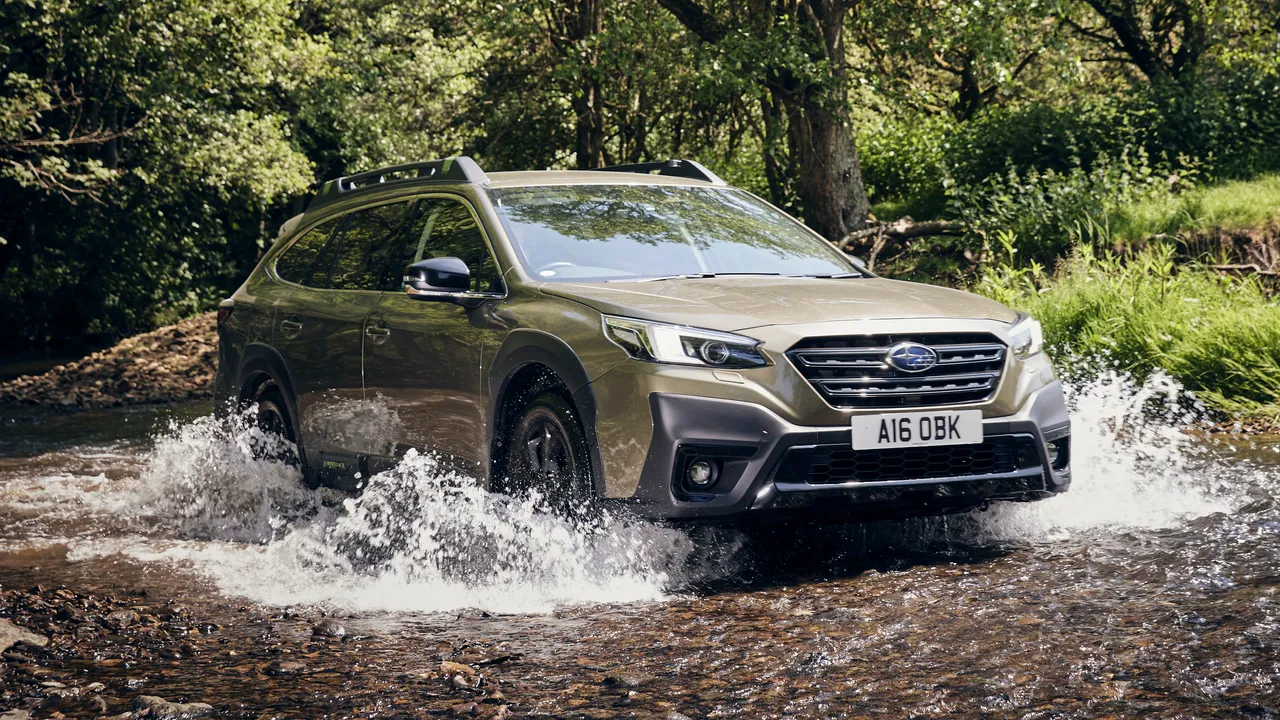
With its AWD system and sophisticated safety technologies, the Outback is perfectly suited for handling icy roads.
Moreover, its roomy interior and generous cargo capacity make it convenient to carry all your winter essentials. If you need a dependable used car for cold and snowy climates, the Subaru Outback is a leading option.
The Subaru Outback stood as the brand’s best-selling model in the U.S. throughout 2023, reinforcing the appeal of its unique formula: a raised Legacy wagon with standard all-wheel drive and just enough SUV flair to attract nearly 160,000 buyers.
This success is notable given the scarcity of lifted station wagons in today’s market. Its few competitors—such as the $75,000 Mercedes-Benz E-Class All-Terrain and the $50,000 Volvo V60 Cross Country—lack the Outback’s combination of affordability and rugged off-road capability.
Instead, most shoppers will compare the Outback to similarly priced compact crossovers like the Subaru Forester, Toyota RAV4, or Honda CR-V. With a selection of 182- and 260-horsepower boxer engines, a wide array of trims, standard AWD, and a strong safety record, the Outback’s popularity is well-earned.
For 2025, Subaru has maintained last year’s pricing across the board, with the only exception being a more feature-rich Limited trim that comes at a higher cost. Aside from this enhancement, the lineup carries over unchanged, maintaining its appeal in the new model year.
For 2025, changes to the Subaru Outback are minimal. The most notable update is to the Limited trim, which now includes additional standard features such as a power moonroof, heated steering wheel, integrated navigation, and a driver-attention monitoring system.
These enhancements come with a corresponding price increase for this trim. Beyond this, there are no other changes for the Outback as it moves into its 2025 model year.
Pricing for the 2025 Outback starts at an MSRP of $28,895 for the base model, equipped with the naturally aspirated 182-hp engine—remaining the only trim priced under $30,000.
The lineup continues with the Premium at $31,195, the Onyx Edition at $36,105, the updated Limited at $37,855, the Wilderness at $39,960, and the Touring at $40,345. All trims above the base and Premium variants are available with the more powerful turbocharged 260-hp engine.
These include the Onyx Edition XT at $39,360, the Limited XT at $40,195, and the Touring XT at $42,795. Pricing for all trims, excluding the Limited, remains the same as the 2024 model year. The $2,060 increase on the Limited reflects its new standard features. Note that all prices exclude the $1,395 destination charge.
Among the lineup, the Onyx Edition XT continues to be a standout. It combines the desirable turbocharged engine with a sub-$40,000 price point. The base 182-hp engine, by contrast, feels underpowered for an adventure-focused vehicle, making it less appealing in the lineup.
The Onyx Edition XT also adds value with its sleek dark-themed exterior, weather-resistant StarTex upholstery, and a generous list of standard features. These include an 11.6-inch touchscreen, a power sunroof, hands-free power liftgate, heated front seats, a power driver’s seat, and a robust set of driver-assistance features.
The base 2025 Outback comes with a 2.5-liter H4 engine producing 182 horsepower and 176 lb-ft of torque, paired with an 8-speed CVT and all-wheel drive.
It has a maximum towing capacity of 2,700 pounds and delivers an EPA-estimated fuel economy of 26/32/28 mpg city/highway/combined. It features 17-inch aluminum wheels, adaptive cruise control, a remote trunk release, bucket seats, and a roomy interior that seats five.
Key dimensions include a 108.1-inch wheelbase, 66.4-inch height, and 191.9-inch length. Interior space is generous, with front legroom at 42.8 inches and rear legroom at 39.5 inches.
Cargo capacity behind the second row is 32.6 cubic feet, with a max volume of 75.6 cu-ft when the rear seats are folded down. Warranty coverage includes a 60-month/60,000-mile powertrain warranty and a 36-month/36,000-mile basic warranty.
2. Toyota RAV4
The Toyota RAV4 is a highly adaptable compact SUV that excels in cold weather conditions.
Celebrated for its toughness and fuel economy, the RAV4 offers an optional AWD system, making it a trustworthy option for winter driving.
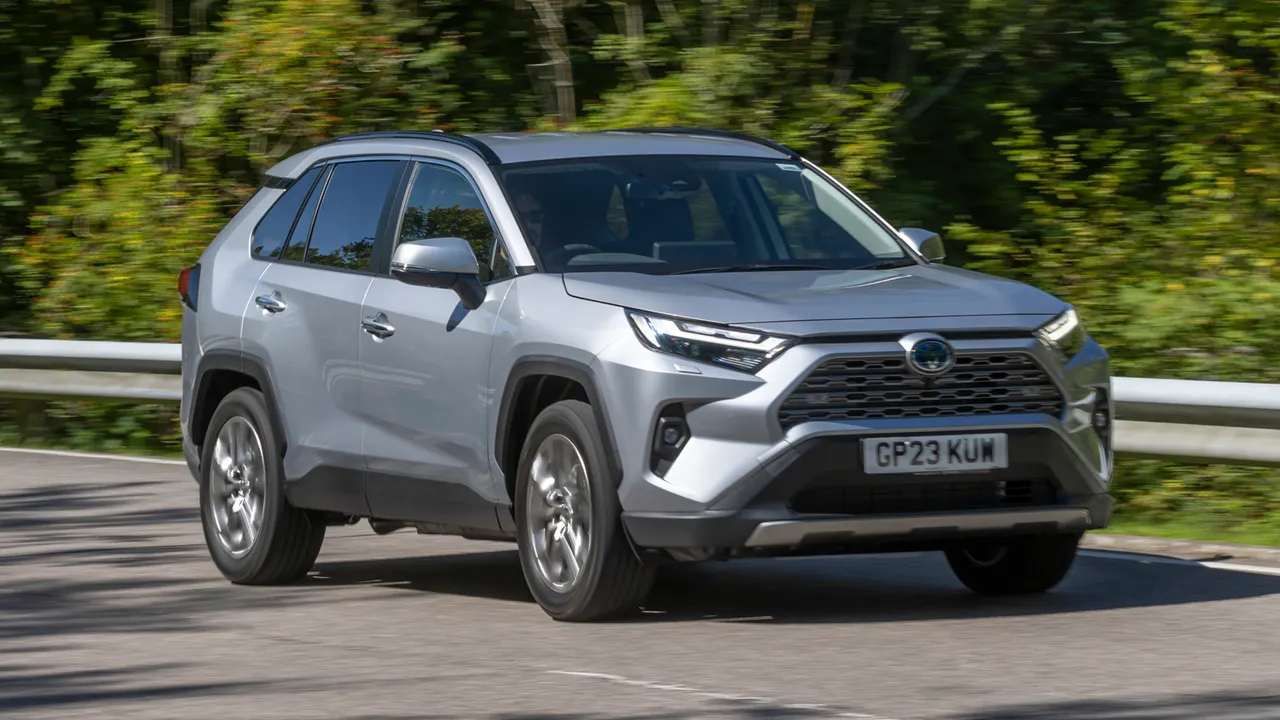
Key Features:
- Heated steering wheel and front seats to provide comfort in freezing temperatures.
- Dual-zone climate control allowing for customized warmth.
- Advanced safety technologies such as traction control and lane departure alert.
The RAV4’s outstanding reliability, combined with features like snow mode, boosts its capability on icy roads. Whether you’re driving to work or embarking on a snowy mountain trip, the RAV4 is well-equipped to handle it.
SUVs often get criticized as being fuel-hungry and harmful to the environment, but that stereotype doesn’t apply to the Toyota RAV4. In fact, it produces less CO2 than some compact cars.
This isn’t just a marketing claim—official data confirms that the RAV4 is one of the most efficient family SUVs on the market today. That’s largely due to its petrol plug-in hybrid engine, especially now that Toyota has discontinued the regular hybrid version from the lineup.
The RAV4 is positioned above the Toyota C-HR and below the rugged Toyota Land Cruiser within the brand’s SUV range. It shares its platform with the Suzuki Across, though unlike some of its similarly sized competitors, it doesn’t offer a seven-seat option.
When it comes to rivals, there’s no shortage. The RAV4 competes with mainstream options like the Ford Kuga, Hyundai Tucson, Kia Sportage, and Volkswagen Tiguan. There are also newer contenders such as the BYD Seal U, Jaecoo 7, and MG HS.
So, how does the RAV4 hold up not just in terms of fuel efficiency, but across all the key areas that matter to SUV buyers? That’s exactly what we aimed to find out when we tested it against its segment competitors.
Thanks to its plug-in hybrid powertrain, the Toyota RAV4 is a smart option for company car drivers, and its strong resale value, excellent fuel economy, and proven reliability make it a compelling choice for private buyers as well.
For those considering a purchase, the Design trim is the most balanced choice, offering a good blend of features without overcomplicating things.
The RAV4’s strengths include its impressive efficiency, slow depreciation, and robust reliability. However, it’s let down by a subpar infotainment system, a driving experience that lacks excitement compared to rivals, and the absence of a seven-seat configuration.
Pricing starts at £42,439, with estimated monthly payments from £474, and leasing options available from £407 per month. Our recommended model is the Toyota RAV4 2.5 PHEV Design 5dr CVT, which carries an RRP of £44,395.
Under the bonnet, the RAV4 boasts a 2.5-litre petrol engine paired with two electric motors, producing a total output of 302bhp and delivering power to all four wheels. This setup enables the RAV4 to accelerate from 0 to 62mph in just 6.0 seconds.
That’s quicker than plug-in hybrid versions of the MG HS and Range Rover Evoque, and significantly faster than the Ford Kuga PHEV and Honda CR-V PHEV. It’s also capable of driving at motorway speeds using only electric power.
During testing, it managed more than 30 miles on electric power alone, while Toyota claims up to 46 miles is possible. This beats the electric range of both the Kuga and Evoque PHEVs, although the MG HS and Volkswagen Tiguan PHEVs are officially rated for over 70 miles on a full charge.
In terms of ride comfort, the RAV4 handles city driving better than the Kuga PHEV and is more composed over vertical movements than the Jaecoo 7.
However, the suspension doesn’t smooth out rough surfaces as effectively at higher speeds. It’s not uncomfortable, but it tends to jolt over potholes and motorway expansion joints more than some would prefer. Compared to rivals like the Hyundai Tucson, Kia Sportage, and Range Rover Evoque, the RAV4 isn’t quite as refined.
When it comes to handling, the RAV4 faces the typical challenges of plug-in hybrids, which often carry the extra weight of battery packs. Even so, its light steering makes it easy to navigate through urban traffic, and it maintains decent body control at lower speeds.
As you pick up speed, though, the RAV4 starts to feel a bit top-heavy, particularly when cornering. It lacks the grip and agility of more dynamic models like the Kia Sportage, and the steering isn’t as sharp as what you’ll find in the Ford Kuga or Range Rover Evoque.
That said, the RAV4 still performs better in terms of stability and confidence than less refined rivals like the Jaecoo 7 or BYD Seal U. While it’s not the most agile or engaging SUV to drive, it remains a solid and predictable performer—qualities that will appeal to many family SUV buyers looking for reliability and comfort over sportiness.
Also Read: 12 Worst GM Cars Ever Built and 10 of the Best
3. Honda CR-V
The Honda CR-V offers a blend of practicality, comfort, and efficiency, making it a superb option for winter driving. Equipped with its Real Time AWD system, the CR-V provides enhanced control on slick and icy roads.
Key Features:
- Remote engine start that allows you to warm up your vehicle before hitting the road.
- Heated front seats and mirrors to help prevent fogging and freezing.
- Outstanding fuel efficiency, ideal for extended winter trips.
The Honda CR-V’s robust AWD system, paired with advanced safety features, makes it a dependable and secure choice for cold weather conditions. Its spacious interior ensures both passengers and cargo remain comfortable during winter excursions.
The 2025 Honda CR-V offers a roomy interior with a cavernous cargo area, intuitive and easy-to-use tech features, and a smooth, comfortable ride.
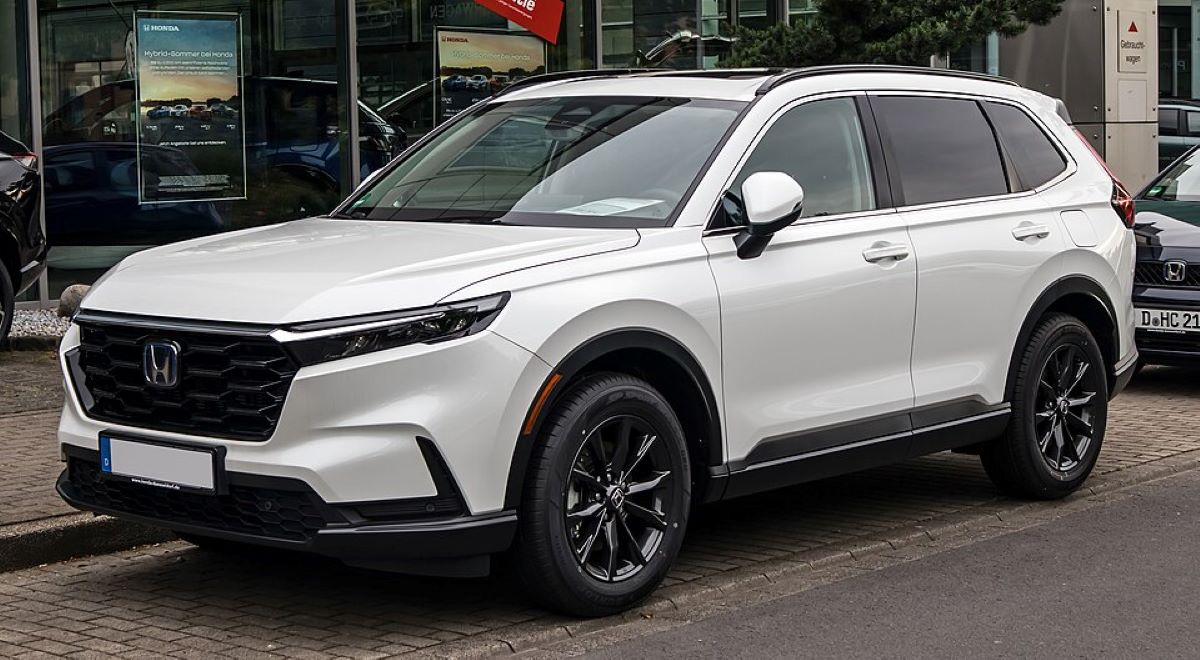
However, it has limited storage for small items within the cabin, and the hybrid powertrain can be noisy and sluggish when tackling hills. For the 2025 model year, there are no significant updates, as it remains part of the sixth CR-V generation that was introduced in 2023.
As the middle child in Honda’s SUV lineup—positioned between the subcompact HR-V and the larger midsize Passport and Pilot—the CR-V has consistently been a standout in the compact SUV segment.
Its reputation for reliability, practicality, and comfort continues with this generation. Even without any major changes for 2025, the CR-V still holds strong appeal for buyers seeking a well-rounded SUV.
Fuel cost estimates for the 2025 CR-V LX (1.5L turbocharged four-cylinder engine with a continuously variable transmission) suggest a monthly fuel expense of around $127, based on 15,000 miles of mixed city and highway driving and an average fuel price of $3.13 per gallon in North Dakota. This is considerably less than the $176 average monthly fuel cost for midsize SUVs, highlighting the CR-V’s efficiency.
What sets the CR-V apart is Honda’s attention to the practical needs of SUV buyers. Rather than focusing on off-road prowess or sporty driving dynamics, the CR-V excels in comfort and usability.
The suspension smooths out road imperfections effectively, and the seats offer sufficient padding for long-distance travel. Its quiet cabin reduces fatigue and creates a relaxing driving environment, perfect for families and commuters alike.
Furthermore, the CR-V boasts a generous 39.3 cubic feet of cargo space behind the rear seats, making it a highly practical choice for hauling groceries, luggage, or gear for weekend adventures.
While the CR-V is a top-tier option, there are other compact SUVs worth considering depending on your priorities. The Mazda CX-50 stands out with its striking design and lively performance, although it’s not as efficient and can be more expensive.
For those seeking a bit more excitement from their daily drive, the CX-50 is a compelling choice. Meanwhile, the Subaru Forester takes a different path, emphasizing all-weather capability and some light off-road readiness, which makes it ideal for buyers who value utility and adventure over sleek design or dynamic handling.
In summary, the 2025 Honda CR-V remains one of the best-rounded compact SUVs on the market. With its excellent comfort, smart design, and unmatched practicality, it continues to be a top pick for families and anyone looking for a capable and efficient vehicle.
4. Jeep Grand Cherokee
For conquering challenging terrains and severe weather, the Jeep Grand Cherokee truly stands out.
This tough SUV is equipped with advanced 4×4 systems, making it extremely capable on snowy and icy surfaces.
Key Features:
- Quadra-Trac or Quadra-Drive systems that deliver exceptional traction.
- Heated seats and steering wheel to keep you warm on cold mornings.
- Impressive towing capacity, perfect for hauling winter sports gear.
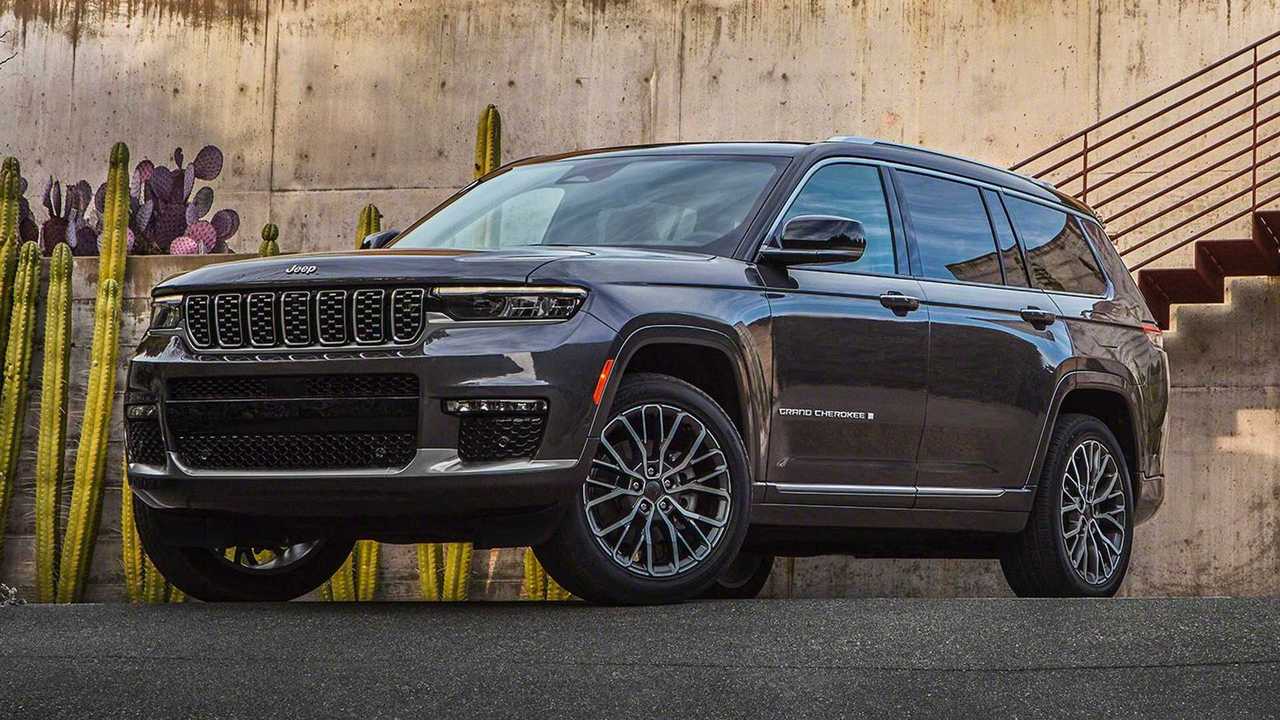
The Jeep Grand Cherokee’s off-road prowess and sturdy construction make it a preferred choice for drivers facing harsh winter conditions. Whether you’re driving on icy highways or snow-covered rural roads, this SUV manages it all effortlessly.
In a scenario reminiscent of Goldilocks, where the standard two-row Grand Cherokee feels too small and the full-size, truck-based Wagoneer seems too large, the Grand Cherokee L strikes the perfect balance.
This midsize SUV offers three rows of seating while retaining the comfortable on-road behavior of the shorter Grand Cherokee, and it’s still capable when venturing off-road.
Despite its added size, it remains manageable around town and in tighter spaces like crowded parking lots. Aside from the inclusion of the third-row seats, the Grand Cherokee L is outfitted similarly to its two-row counterpart, which is reviewed separately. Both versions come with a standard 293-horsepower V-6 engine.
Though this engine may come across as slightly unrefined, it delivers reliable performance. The interior, on the other hand, contrasts the engine’s roughness with a polished, modern design, even in the base Laredo trim.
As you move up through the various trim levels, the Grand Cherokee L adds more luxury, culminating in the Summit Reserve. This top-tier trim—aptly named like a fine vintage—offers premium leather upholstery along with a wealth of technology and comfort amenities.
In terms of pricing, the Grand Cherokee L positions itself between mainstream three-row SUVs such as the Kia Telluride and more upscale models like the Audi Q7. Thanks to a wide array of available trims, this SUV can be customized to appeal to buyers across a broad spectrum, whether they’re seeking affordability or near-luxury refinement.
5. Volvo XC90
Volvo has long been associated with safety, and the XC90 continues that tradition. This luxury SUV is loaded with features tailored for excellent winter performance and passenger safety.
Key Features:
- All-Wheel Drive that improves stability and traction.
- Heated seats in both the front and rear for maximum comfort.
- Advanced safety technologies such as lane-keeping assist and collision mitigation.
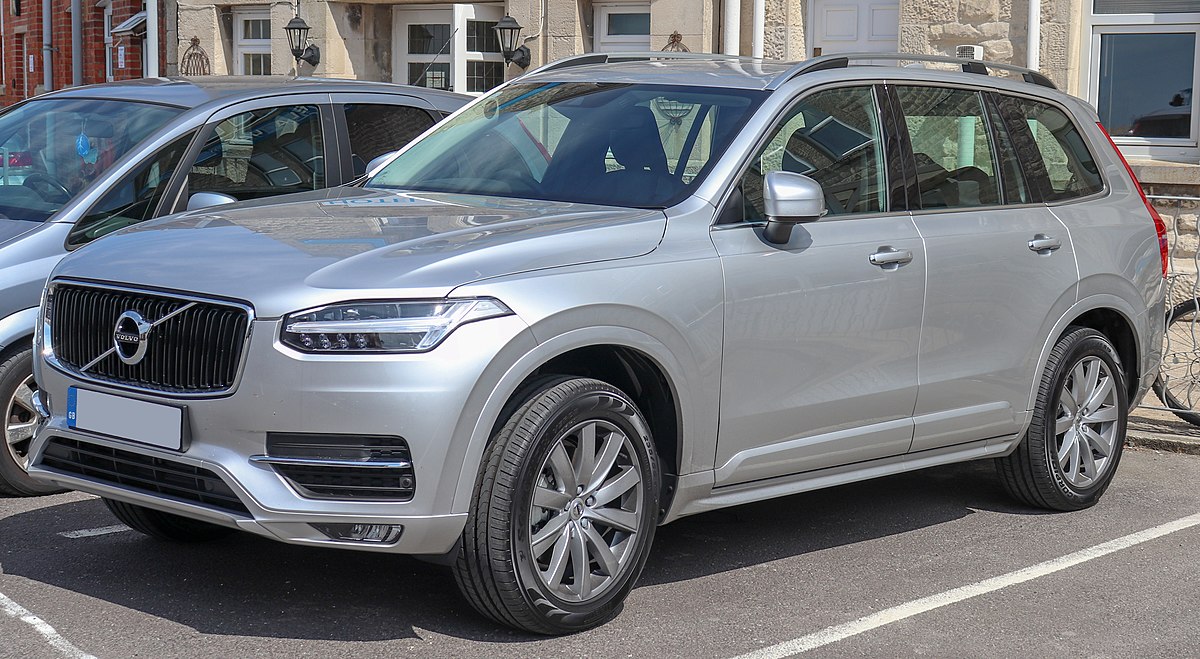
The Volvo XC90 offers a luxurious cabin combined with premium safety features, ensuring a secure and comfortable ride even in the most severe winter conditions. Its Scandinavian design ethos is specifically crafted to withstand freezing climates.
The Volvo XC90 is Volvo’s flagship SUV—a midsize luxury crossover that blends Scandinavian design, advanced safety features, and family-friendly practicality. It’s one of the most refined and elegant SUVs in its class, aimed at buyers who prioritize comfort, understated luxury, and cutting-edge technology over flashy performance.
Most Dangerous Cars For Winter Driving
Winter driving presents considerable challenges, particularly because some vehicles are less equipped to handle icy conditions than others.
A recent study conducted by MNH Injury Lawyers examined crash data, safety systems, and protection ratings to identify the most dangerous cars for winter driving.
Surprisingly, the list is dominated by both trucks and sedans, each showing various vulnerabilities depending on their design.
The composite score used in the study assesses vehicle safety during winter by combining crucial factors such as fatal crash rates, the effectiveness of safety systems, and occupant protection for both adults and children.
Additionally, it evaluates how well a vehicle safeguards pedestrians and other vulnerable road users.
By weighting all these components, the score offers a comprehensive measure of a vehicle’s safety and dependability in challenging winter conditions. Here’s a closer look at the data.
1. Chevrolet Silverado 1500
Leading the list is the Chevrolet Silverado 1500, a widely favored work truck for many drivers. Unfortunately, it registered 127 fatal crashes per 100,000 units sold, the highest figure among all vehicles analyzed.
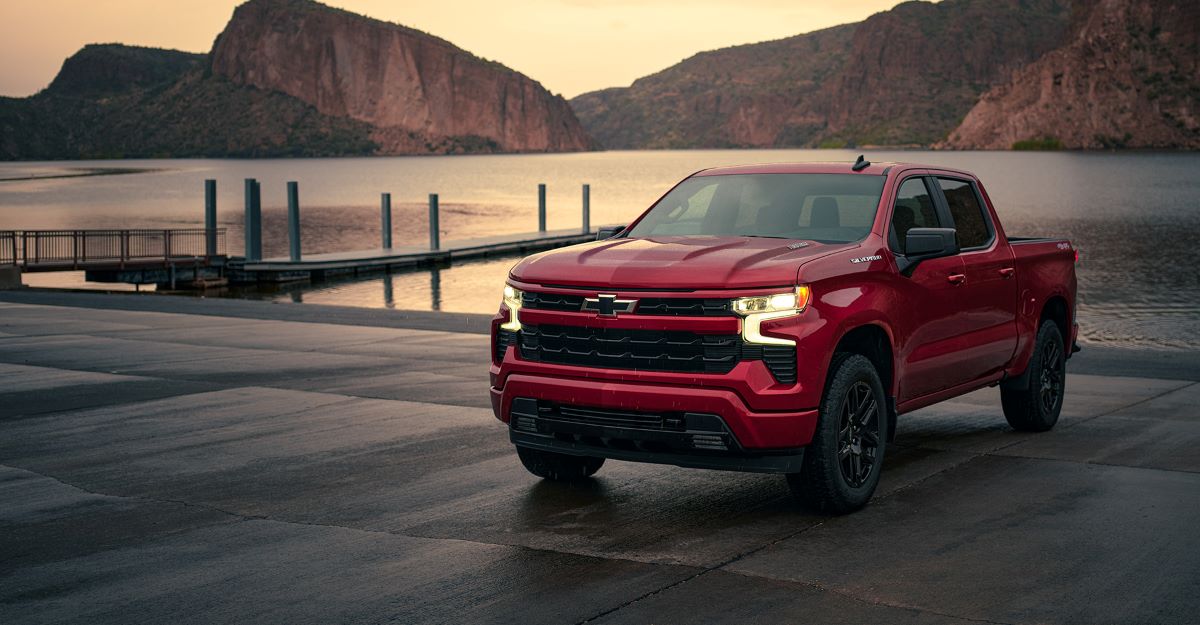
With a safety system rating of 76% and a composite score of 88, it demonstrates notable challenges when driving in winter conditions. Its heavy frame and potentially longer braking distances contribute to the difficulties in handling on icy roads.
Pros of the 2025 Silverado 1500 include a broad selection of available powertrains suited for various towing and hauling requirements, a spacious cabin that offers exceptional rear legroom, numerous in-bed tie-down points, and an expansive bed capacity. Additionally, the attractive and user-friendly touchscreen display enhances the truck’s interior tech appeal.
However, the cons are worth noting. Many versions of the Silverado 1500 exhibit a slightly rougher ride compared to key rivals, and the ZR2 off-road variant falls short when measured against competing off-road-focused trucks.
What’s new for 2025 includes a notable change in the availability of the 10-speed automatic transmission, which is now exclusive to four-wheel-drive models.
The Trail Boss trim now comes standard with all-terrain tires, and there has been minor reshuffling in standard features across the lineup. This model remains part of the fourth generation Silverado, which was initially introduced in 2019.
The 2025 Chevrolet Silverado 1500 represents Chevy’s entry in the highly competitive full-size pickup segment. Positioned between the smaller midsize Colorado and the more rugged heavy-duty Silverado lineup, the Silverado 1500 serves a wide range of truck buyers.
It offers trims and powertrains tailored for everything from no-frills work duties to off-road excursions and high-end luxury. Notably, this lineup does not include the Silverado EV, which is covered in a separate review.
Given the fierce competition in this segment, potential buyers are encouraged to consult the Expert Rating to see how the Silverado 1500 measures up against other top choices in the full-size truck market.
2. Ford F-150
The Ford F-150 ranks second on the list, showing a somewhat improved but still concerning record for winter driving. It recorded 70 fatal crashes per 100,000 vehicles sold and received a composite score of 63.
While it boasts an 82% child occupant safety rating, the F-150 has difficulties with pedestrian safety, achieving only a 70% score in protecting vulnerable road users.
The pros of the 2025 F-150 include a broad array of engine options, ranging from hybrid and all-electric choices to traditional gasoline powertrains. It boasts impressive maximum towing and payload capacities, making it a highly capable workhorse.
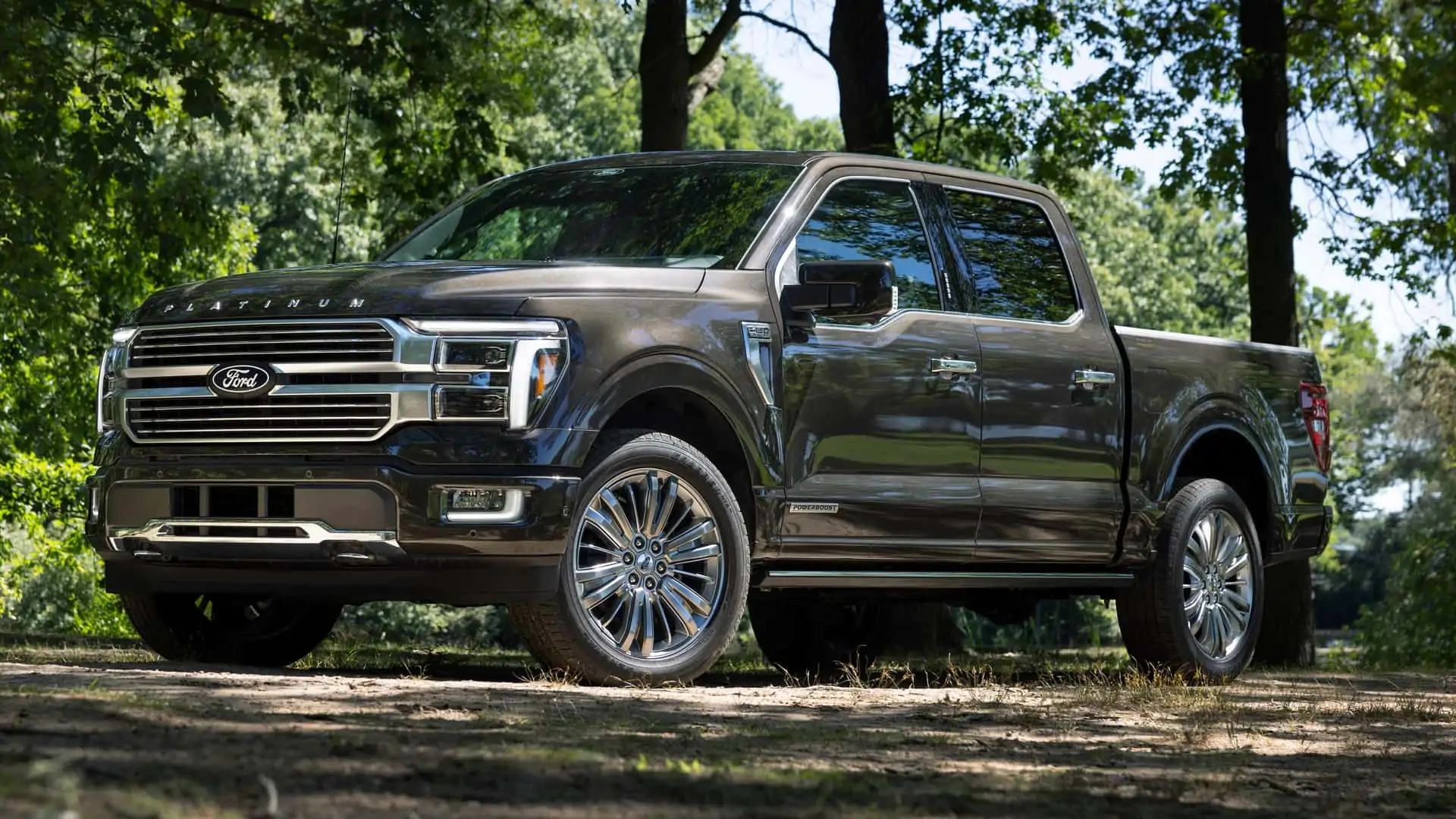
The F-150 also features an intuitive and easy-to-use infotainment system, as well as a variety of truck-friendly options, such as an onboard generator, making it versatile for different types of work and outdoor activities.
However, there are some cons to consider. The interior storage spaces could be more spacious and flexible, especially for those needing more organization. Additionally, while the optional hybrid powertrain offers excellent fuel economy, it can be noisy when powering the onboard generator, which may detract from its otherwise smooth performance.
What’s new for the 2025 model year? There are no major changes to the F-150, as it continues to be part of the 14th generation F-150, which was first introduced in 2021.
The Ford F-150 remains a highly versatile option for truck buyers and is the best-selling vehicle in the U.S. Its broad range of variants, from simple work trucks to near-luxury models with leather upholstery, tech features, and premium finishes, makes it a go-to choice for nearly any kind of truck enthusiast.
It sits above the smaller Maverick and Ranger in Ford’s lineup and offers enough variety to meet a wide spectrum of needs. The F-150 is also available in an all-electric version, the F-150 Lightning, and the heavy-duty Super Duty series, both of which are reviewed separately.
Also Read: 11 Foreign Car Brands Building Their Best Vehicles in America
3. Ram 1500
The Ram 1500 is ranked fifth overall and presents its own unique challenges.
It recorded 36 fatal crashes per 100,000 units sold and earned a composite score of 55, underscoring that even highly capable pickups face significant risks in winter conditions.
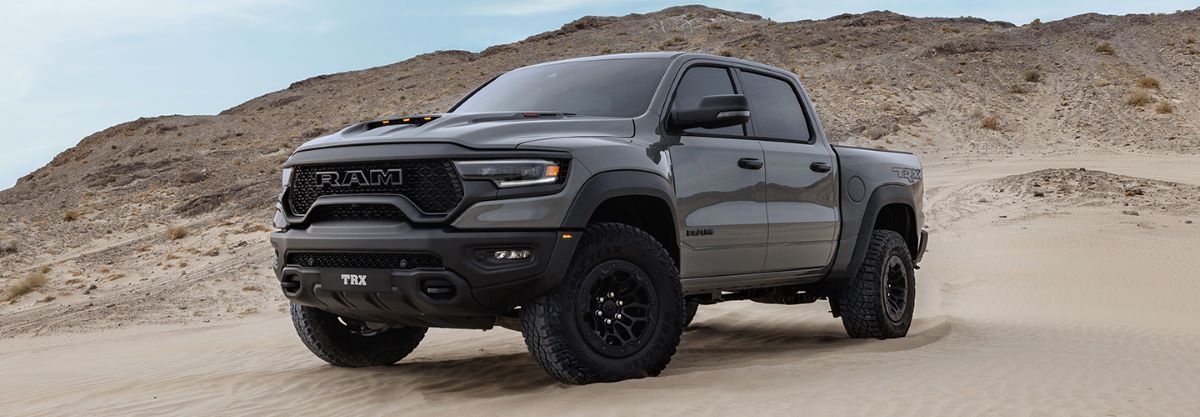
Its child occupant safety rating of 64% is one of the lowest, raising concerns for families traveling in cold-weather environments.
The Ram 1500 excels at blending capability with comfort, and for 2025, this full-size pickup receives a variety of updates that help it maintain its strong position in the market. The truck offers a selection of six-cylinder engines, with a base V-6 engine and a more powerful twin-turbo inline-six available in two output levels.
This new inline-six engine replaces the previous Hemi V-8 and produces up to 540 horsepower. The Rebel trim provides enhanced off-road capabilities, but the Ram 1500 truly shines when configured for luxury.
High-end trims like the Limited and the new Tungsten model offer a premium experience that rivals more expensive vehicles, all while maintaining the truck’s rugged work capabilities.
Although the Ram 1500 doesn’t quite match the Ford F-150 or Chevy Silverado in towing capacity, its maximum towing ability is still substantial enough that most buyers won’t find it lacking.
4. Honda Accord
The Honda Accord is ranked as the third most dangerous car for winter driving. Despite its reputation for reliability as a sedan, the Accord recorded 69 fatal crashes per 100,000 vehicles sold.
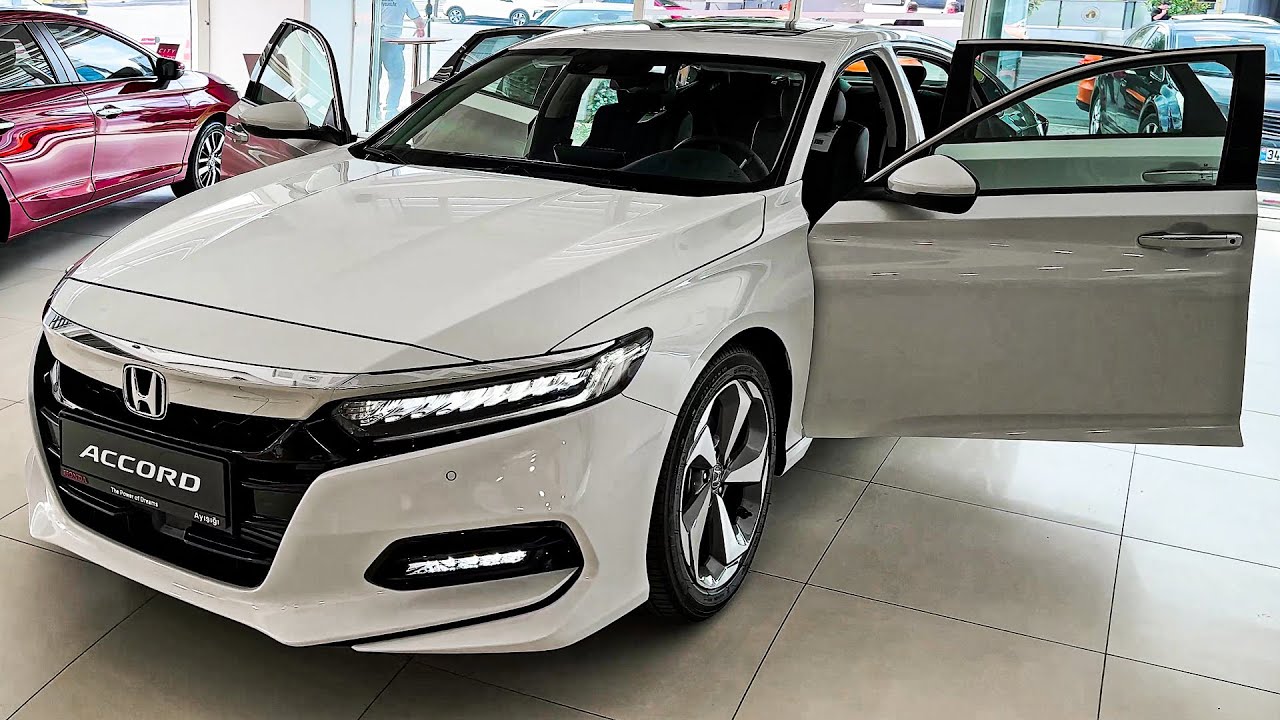
Its vulnerable road user safety score of only 54% underscores further risks, along with its composite score of 62.
The Honda Accord has been a staple in Honda’s lineup for decades, much like its smaller sibling, the Civic, with its roots going back to the 1970s. Over the years, it has been offered in various body styles, including a hatchback and a two-door coupe.
However, the current 11th-generation model has returned to the familiar four-door sedan format, staying true to its legacy. The Accord competes with long-time rivals such as the Toyota Camry and Nissan Altima in the midsize sedan category.
The 2023 Accord underwent a complete redesign, improving its architecture, strengthening its hybrid powertrain, refining the gasoline model, and upgrading its technology.
The 2024 model carried over with minimal changes, but the 2025 Accord introduces a few updates: the SE trim replaces the previous EX trim, now featuring black exterior design elements; rear air conditioning vents and rear USB-C ports are now standard across all models; and heated front seats and a Qi-compatible 15W wireless phone charger are now standard on all hybrid models.
While the Honda Accord continues to lead the midsize sedan class, it’s not as compelling as it once was. Both available powertrains offer smooth acceleration, though our test team noted that the turbo-four engine’s CVT can feel a bit sluggish.
The steering was not as responsive as expected, but the brakes offered solid performance, and the handling remained neutral and predictable.
Ride quality was excellent on smaller wheels, though the cabin experienced more wind and road noise compared to many competitors. Inside, the Accord features an attractive design that mirrors the current Civic, though not an exact copy. The base touchscreen is small, and lower trims feature materials like rough seat fabric and door panels.
The premium interior, however, is only available with the hybrid model, but all versions come standard with a range of safety features. Despite these small drawbacks, the Accord remains a solid, comfortable, and capable choice, though the previous model tested offered slightly better fuel economy.
5. Hyundai Elantra
Ranking fourth on the list is the Hyundai Elantra, which holds the lowest adult and child occupant safety ratings among all the vehicles examined, both at 60%.
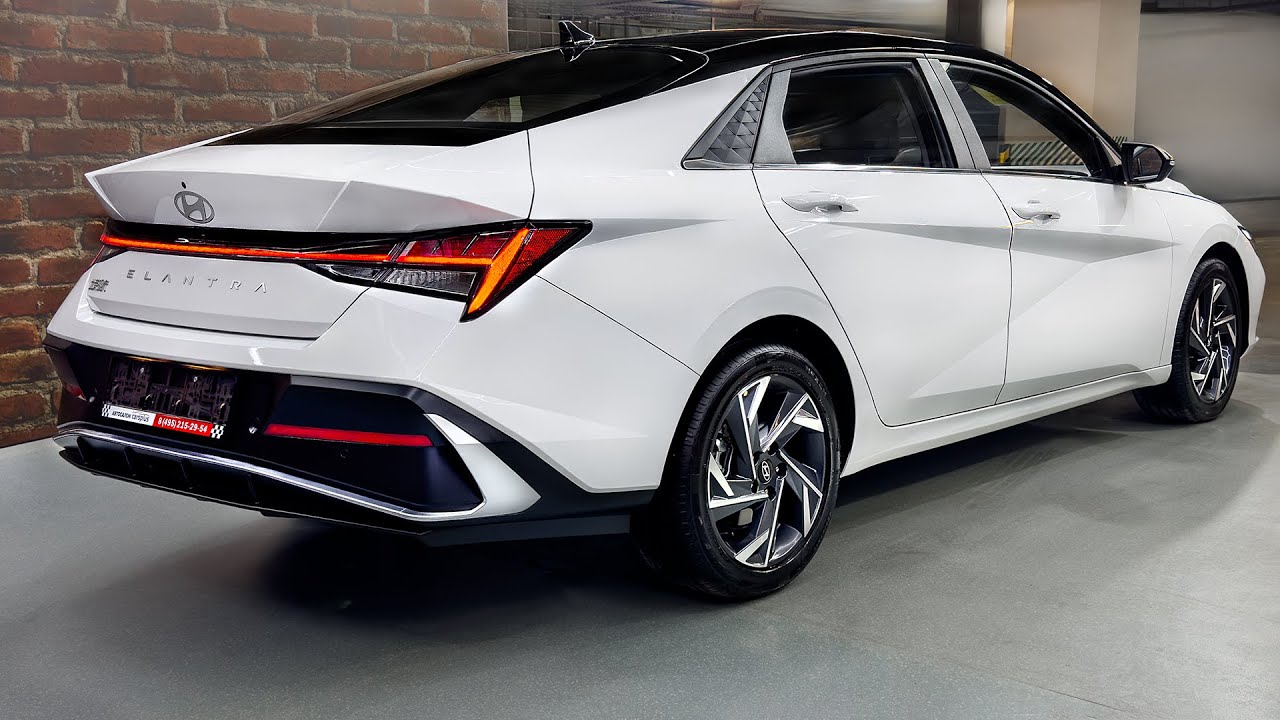
With a composite score of 58, it highlights the challenges compact sedans face in delivering sufficient safety during winter conditions.
The Hyundai Elantra is a compact sedan known for its combination of affordability, technology, and distinctive design.
In recent generations, it has adopted a bold, angular styling that sets it apart from other vehicles in its class. The Elantra offers several engine options, including a standard 2.0-liter 4-cylinder engine that provides around 147 horsepower and strikes a balance between power and fuel efficiency.
For those seeking better fuel economy, the Elantra Hybrid offers a combined output of 139 horsepower and delivers excellent fuel efficiency. The Elantra N, the sportier variant, features a turbocharged 2.0-liter 4-cylinder engine producing 276 horsepower, appealing to those looking for a more engaging driving experience.

